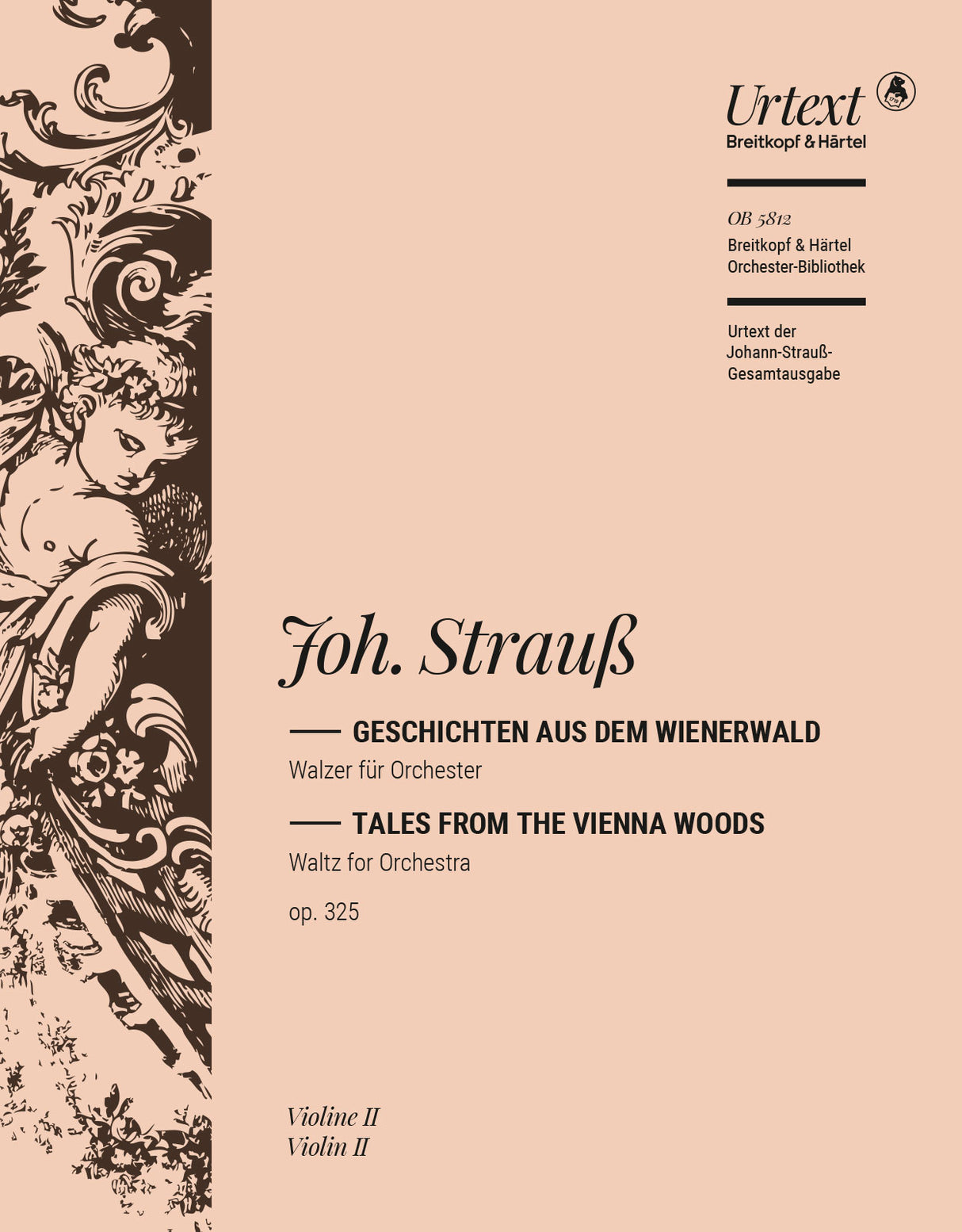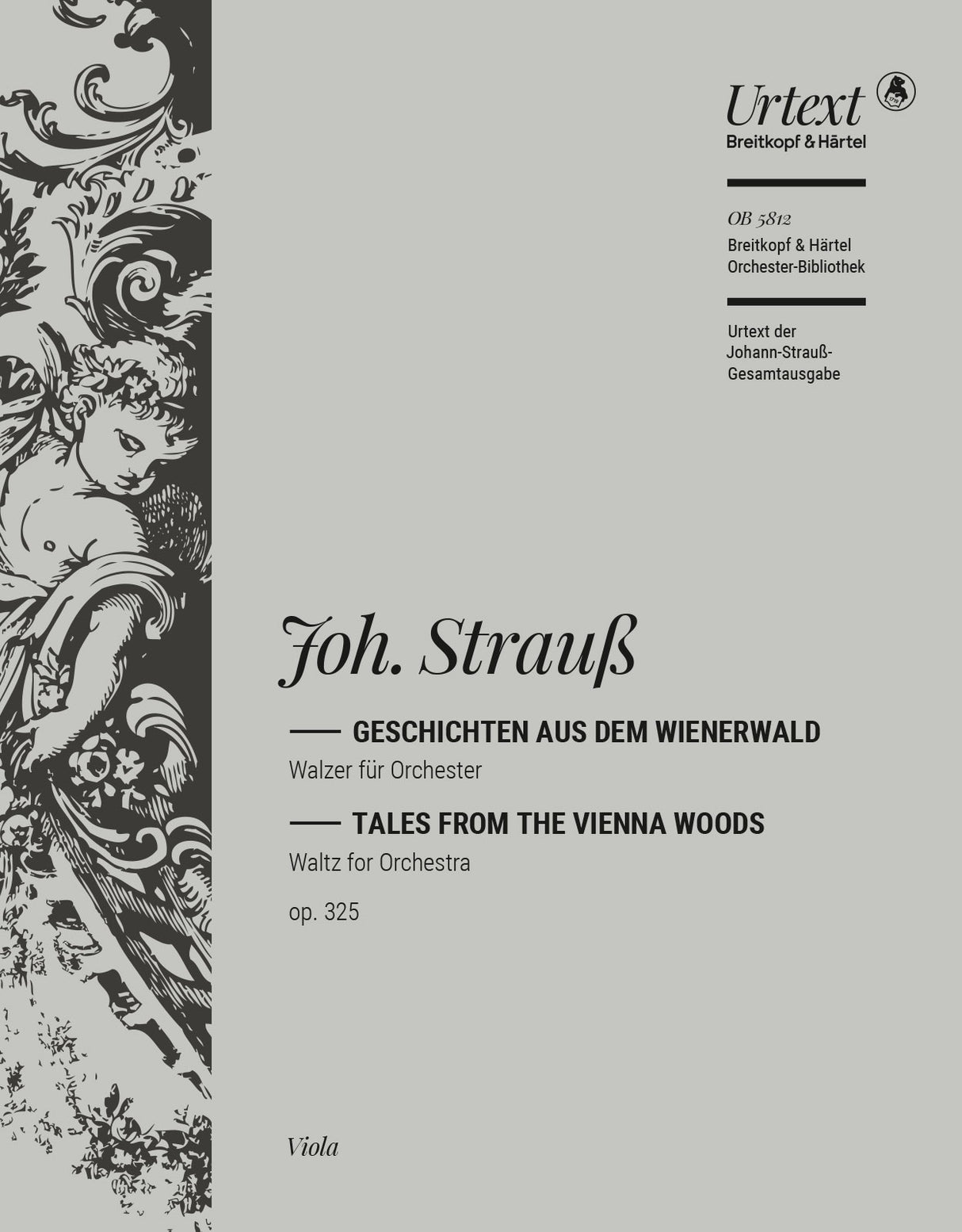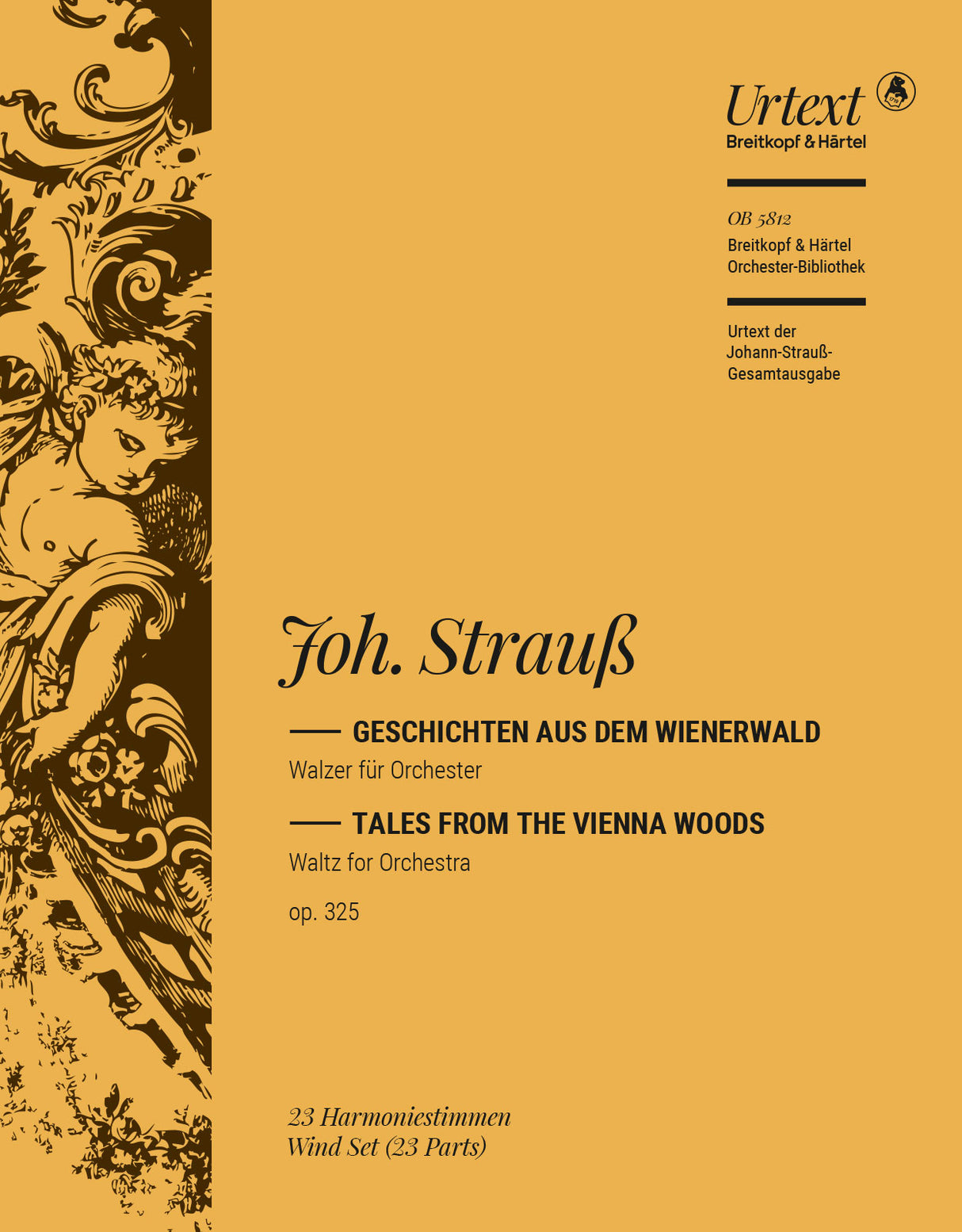J. Strauss: Tales from the Vienna Woods, Op. 325
In stock and typically ships within 1 business day.
- Composer: Johann Strauss II (1825-1899)
- Editor: Fritz Racek (1911-1975)
- Instrumentation: Orchestra
- Work: Geschichten aus dem wienerwald (Tales from the Vienna Woods), Op. 325
- ISMN:
- Size: 9.8 x 12.6 inches
- Pages: 64
- Urtext / Critical Edition
Description
To this day, the waltzes of Johann Strauß are a symbol of elegance, dancing lightness and Viennese joie de vivre.
Johann Strauß II revolutionized the Viennese waltz in the 19th century and made it popular all over the world. His works, such as the famous waltzes "The Beautiful Blue Danube", Op. 314 and "Tales from the Vienna Woods", Op. 325, are characterized by captivating melodies, lively rhythms and a brilliant orchestration.
Strauß composed most of his instrumental works for his Strauß Orchestra, which he conducted himself. Since only a small number of manuscripts have survived, the first editions are the most important sources. in the preface to the Johann Strauß Complete Edition, special attention is given to the question of the smaller instrumentation of the Strauß Orchestra. The unison parts were by no means always to be played "a due", as was the case in earlier scores; rather, the size of the ensemble depended on the occasion, be it a concert performance in a closed room or outdoors, in a private circle or as dance music in a bustling ballroom.
As the k. k. Hofballmusikdirektor (Music Director of the Royal Court Balls), the "Waltz King" was responsible for all court balls until 1871, and he composed exclusively dance music. The operetta waltzes (e. g. in "Die Fledermaus" and "Eine Nacht in Venedig", Op. 411) are as popular as the "Emperor Waltz", Op. 437, which is regularly played at the Vienna Philharmonic's New Year's Concert. Strauss' waltzes have become a hallmark of Viennese culture and are still an integral part of classical concerts and balls. It was with good reason that Mariss Janson once declared the "The Beautiful Blue Danube" Waltz to be the secret national anthem of Austria.
Publishers use a lot of words to describe what they sell, and we know it can be confusing. We've tried to be as clear as possible to make sure you get exactly what you are looking for. Below are descriptions of the terms that we use to describe the various formats that music often comes in.
Choral Score
A score for vocalists that only contains the vocal lines. The instrumental parts are not there for reference. Generally, cheaper than a vocal score and requires multiple copies for purchase.
Facsimile
Reproductions of the original hand-written scores from the composer.
Full Score
For ensemble music, this indicates that the edition contains all parts on a single system (there are not separate parts for each player). In larger ensembles, this is for the conductor.
Hardcover
Hardbound. Generally either linen-covered or half-leather.
Orchestral Parts
Similar to a wind set, this is a collection of parts. In the case of strings, the numbers listed are the number of copies included, though generally these are available individually (often with minimum quantities required).
Paperback
When publishers offer multiple bindings (e.g. hardcover) or study scores, this is the "standard" version. If you're planning to play the music, this is probably what you want.
Performance / Playing Score
A score of the music containing all parts on one system, intended for players to share. There are not separate parts for each player.
Set of Parts
For ensemble music, this indicates that there are separate individual parts for each player.
Solo Part with Piano Reduction
For solo pieces with orchestra, this is a version that contains a piano reduction of the orchestra parts. For piano pieces, two copies are typically needed for performance.
Study Score
A small (think choral size) copy of the complete score meant for studying, and not playing. They make great add-ons when learning concertos and small chamber works.
Vocal Score
A score prepared for vocalists that includes the piano/organ part or a reduction of the instrumental parts.
Wind Set
For orchestral music, this is a collection of wind and percussion parts. The specific quantities of each instrument are notated.
With Audio
In addition to the printed music, the edition contains recordings of the pieces. This may be an included CD, or access to files on the internet.
With / Without Fingering (Markings)
Some publishers prepare two copies - a pure Urtext edition that includes no fingering (or bowing) suggestions and a lightly edited version that includes a minimal number of editorial markings.









